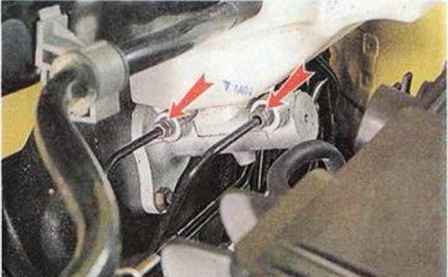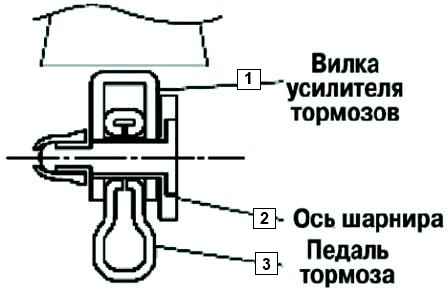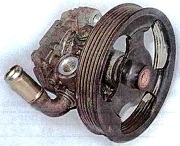The gap between the brake light switch and the brake pedal is adjusted automatically when the brake light switch is inserted into the hole on the brake pedal and rotated to lock in place
If the brake light switch is not set properly, the clearance may be incorrect, causing the brake lights to not work properly.
Therefore, before mounting the brake light switch on the pedal, always check the correct installation and position of the brake pedal (fully released).
Once the brake light switch gap has been automatically adjusted, it cannot be adjusted again.
Therefore, replace the switch with a new one when replacing the brake booster or pedal, or when doing any work that changes pedal travel.
Remove the battery and battery tray.

Disconnect the brake line (master cylinder side).
Remove the brake pedal bolts and nuts.
Move the brake booster to the front of the car so that the brake booster fork does not come into contact with the brake pedal lever.
Remove the brake pedal.

Installing the brake pedal
Install the new pivot pin by aligning the holes in the brake booster yoke and the brake pedal.

Make sure that the hinge pin touches the brake booster fork completely (fig. 2).
Check the brake pedal.
With the brake pedal fully released, insert the new brake light switch into the hole on the brake pedal.

Fix the brake light switch by turning it counterclockwise by 45° (fig. 3).
Adjusting the clearance of the stopper bolt and pedal stopper after the brake light switch is securely locked is not required.










